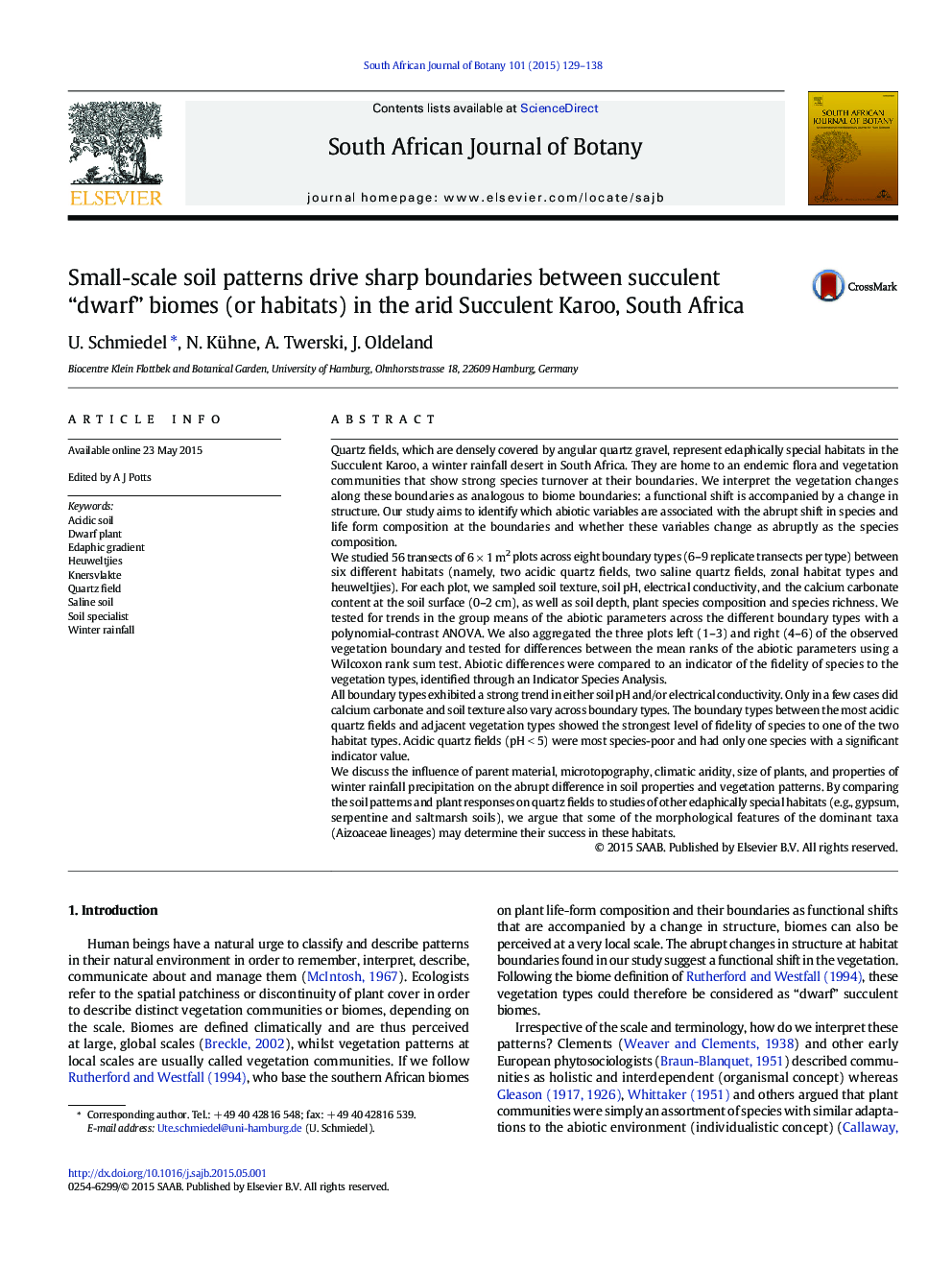| کد مقاله | کد نشریه | سال انتشار | مقاله انگلیسی | نسخه تمام متن |
|---|---|---|---|---|
| 4520417 | 1625157 | 2015 | 10 صفحه PDF | دانلود رایگان |
• We analyse abrupt boundaries of quartz field habitat types.
• We sampled soil and vegetation of plots across boundaries.
• The variables soil pH and salinity show the strongest changes at the boundaries.
• Habitats with very acidic and saline soils had the highest level of faithfulness of species.
• Quartz field special habitats have multiple analogies with gypsum, serpentine and saltmarsh soils.
Quartz fields, which are densely covered by angular quartz gravel, represent edaphically special habitats in the Succulent Karoo, a winter rainfall desert in South Africa. They are home to an endemic flora and vegetation communities that show strong species turnover at their boundaries. We interpret the vegetation changes along these boundaries as analogous to biome boundaries: a functional shift is accompanied by a change in structure. Our study aims to identify which abiotic variables are associated with the abrupt shift in species and life form composition at the boundaries and whether these variables change as abruptly as the species composition.We studied 56 transects of 6 × 1 m2 plots across eight boundary types (6–9 replicate transects per type) between six different habitats (namely, two acidic quartz fields, two saline quartz fields, zonal habitat types and heuweltjies). For each plot, we sampled soil texture, soil pH, electrical conductivity, and the calcium carbonate content at the soil surface (0–2 cm), as well as soil depth, plant species composition and species richness. We tested for trends in the group means of the abiotic parameters across the different boundary types with a polynomial-contrast ANOVA. We also aggregated the three plots left (1–3) and right (4–6) of the observed vegetation boundary and tested for differences between the mean ranks of the abiotic parameters using a Wilcoxon rank sum test. Abiotic differences were compared to an indicator of the fidelity of species to the vegetation types, identified through an Indicator Species Analysis.All boundary types exhibited a strong trend in either soil pH and/or electrical conductivity. Only in a few cases did calcium carbonate and soil texture also vary across boundary types. The boundary types between the most acidic quartz fields and adjacent vegetation types showed the strongest level of fidelity of species to one of the two habitat types. Acidic quartz fields (pH < 5) were most species-poor and had only one species with a significant indicator value.We discuss the influence of parent material, microtopography, climatic aridity, size of plants, and properties of winter rainfall precipitation on the abrupt difference in soil properties and vegetation patterns. By comparing the soil patterns and plant responses on quartz fields to studies of other edaphically special habitats (e.g., gypsum, serpentine and saltmarsh soils), we argue that some of the morphological features of the dominant taxa (Aizoaceae lineages) may determine their success in these habitats.
Journal: South African Journal of Botany - Volume 101, November 2015, Pages 129–138
